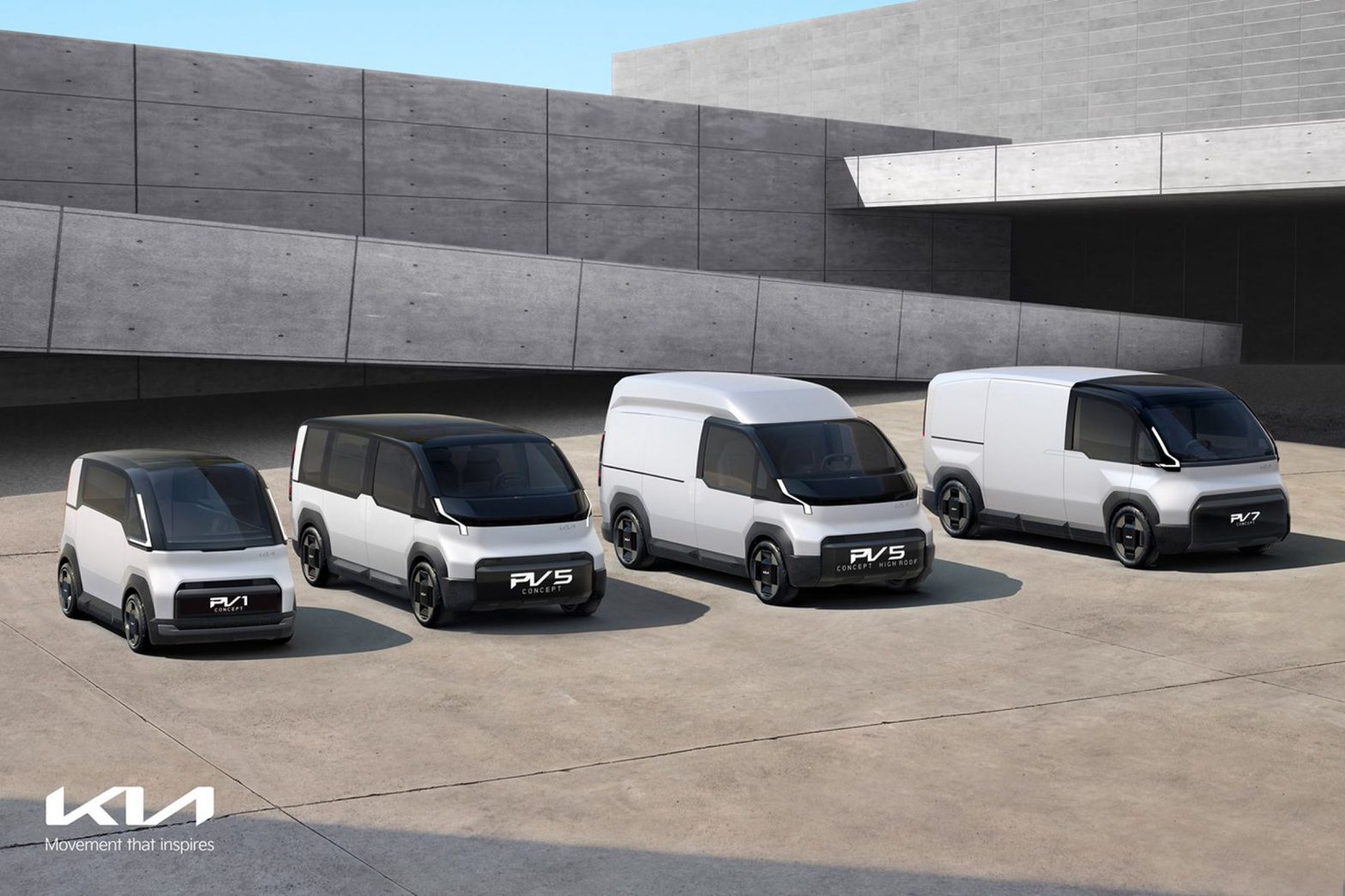/
They may look like boring blobs, but Kia has outlined a three-phase business strategy for its ‘Platform Beyond Vehicle.’
Share this story
:format(webp)/cdn.vox-cdn.com/uploads/chorus_asset/file/25209535/21644_Kia_PBV_Concept_Lineup.jpg)
CES is famous for highlighting the outlandish, the uncompromising, and the immobile in the auto industry, but props to Kia for thinking more practically with its latest concept.
The South Korean automaker unveiled the PBV, or Platform Beyond Vehicle, which utilizes a flexible chassis to support a variety of vehicle types designed for businesses and individuals. How flexible? Kia is thinking of at least nine different vehicle variations built on the same platform.
:format(webp)/cdn.vox-cdn.com/uploads/chorus_asset/file/25209887/21654_PV5_Concept.jpg)
The PBVs kind of resemble boring blobs: minivans with flat fronts, minimal overhangs, and an overall boxy design that screams “utility.” They can have long or short wheelbases. Interiors can be configured to fit the specific use case. Customers can mix and match different seating arrangements if they aim to shuttle passengers. But if cargo is the priority, the seats can be removed to make enough room.
And unlike some concepts, the PBVs may become a reality based on an extensive multiyear business strategy outlined by Kia. The automaker envisions this strategy unfolding in three distinct phases.
The first involves introducing the PV5, “a versatile EV optimized for major domains such as hailing, delivery, and utilities that features conversion capability for diverse customer needs.” The PV5 is designed to operate as a software-defined fleet, connecting each vehicle to a central hub for delivery information and navigation.
The second will see Kia building out the rest of the PBV lineup, with each vehicle evolving into “AI-based mobility platforms that use data to interact with users and help keep vehicles updated.”
And the third and final phase will see the vehicles evolving further to become “highly customizable, bespoke mobility solutions by integrating with the future mobility ecosystem.” Vague? Sure, but not anything outside of the realm of possibilities.
:format(webp)/cdn.vox-cdn.com/uploads/chorus_asset/file/25209888/21656_PV5_Concept.jpg)
This isn’t the first time the “PBV” concept has made an appearance at CES. Hyundai, which owns a controlling stake in Kia, also had a PBV, or Purpose Built Vehicle, as part of its air mobility concept at the show in 2020. It was described as an “eco friendly urban vehicle” that would dock with the company’s electric air taxis for ground transportation. ty
Kia didn’t release specs for its spin on the PBV, aside from describing it as a weldless body structure designed to be shipped in “standardized, kit form.” The design is simple and unadorned, emphasizing their chimeric nature. As Kia puts it:
Behind a fixed cab, or ‘driver zone’, a variety of interchangeable upper bodies, or ‘life modules’, can be connected to the base vehicle via a hybrid electromagnetic and mechanical coupling technology, turning the PBV into a taxi during the day, to a delivery van at night, and a personal recreational vehicle on weekends.
But these won’t be flimsy, interchangeable parts. Kia says the PBV is designed to be “solid [and] robust” — though that is sure to be a challenge given the nature of modular designs with their multiple points of possible failure.
The phase one plan for the PV5 involves several different variants, including Basic, Van, High Roof, and Chassis Cab. In the future, Kia said it plans to introduce a robotaxi model developed with Motional, which is a joint venture between Aptiv and Kia’s parent company, Hyundai.
Phase two will see the addition of two more models, the PV7 and PV1. The former aims to be the largest product in the PBV lineup, designed with more interior space, range, and enhanced functionalities. The latter will be the lineup’s smallest, designed for agile and short-distance logistics transportation, with a minimal turning radius even in narrow spaces.
:format(webp)/cdn.vox-cdn.com/uploads/chorus_asset/file/25209889/21657_PV1_Concept_PV7_Concept_Docking.jpg)
Inside, the vehicle will feature a number of rails on the floor, ceiling, and side panels as well as on the exterior to enhance cargo customization. Customers will have input into the design and production based on how they want their vehicles to look.
Kia is planning a dedicated factory in Hwaseong, South Korea, for the production of the PBV vehicles. The plant will come on line in 2025 with an expected output of 150,000 vehicles annually.
